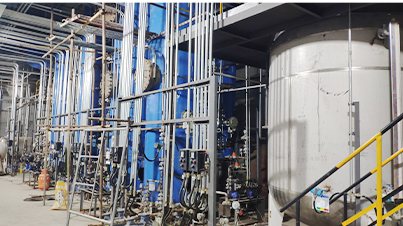Exploring the Applications and Benefits of Diethylenetriaminepentaacetic Acid in Various Industries
The Importance of Diethylenetriamine Pentaacetic Acid in Modern Applications
Diethylenetriamine pentaacetic acid (DTPA) is a versatile polyaminocarboxylic acid that has garnered significant attention in various fields, including chemistry, medicine, and environmental science. Its unique chemical structure, which incorporates multiple carboxyl groups, makes it an effective chelating agent capable of forming stable complexes with a wide range of metal ions. This article delves into the importance and applications of DTPA across diverse industries.
Fundamental Properties
DTPA's molecular structure, which includes five acetic acid groups, allows it to effectively bind metal ions such as calcium, magnesium, lead, and uranium. This chelation property is crucial for many applications, particularly in scenarios where metal ion concentration needs to be controlled or mitigated. The ability to form stable complexes not only enhances its utility but also contributes to its safety profile, rendering it less toxic compared to other chelating agents.
Applications in Medicine
One of the most significant uses of DTPA is in the medical field, particularly in diagnostic imaging and treatment of heavy metal poisonings. DTPA is employed as a radiocontrast agent in nuclear medicine, facilitating the visualization of various bodily structures through imaging techniques. By chelating radioactive isotopes, DTPA helps to clear excess radioactivity from the body, minimizing potential harm.
Additionally, DTPA is utilized in chelation therapy for the treatment of heavy metal toxicity. In cases of lead or mercury poisoning, for instance, DTPA binds to the toxic metals in the bloodstream, allowing for their excretion through urine. This application has been critical in treating occupational exposure to heavy metals and in addressing environmental contamination issues.
Agricultural and Environmental Uses
diethylenetriamine penta

In agriculture, DTPA finds utility in soil remediation, particularly in areas contaminated with heavy metals. Due to its strong chelating properties, DTPA can help to detoxify polluted soils by binding to harmful metal ions and enhancing their mobility for phytoremediation processes. This method not only aids in cleaning up contaminated sites but also improves soil health and fertility.
Moreover, DTPA is utilized in water treatment processes to control metal ion concentrations in industrial wastewater. Its ability to chelate metals helps in reducing the toxicity of effluents, making it safer for discharge into natural water bodies. By enabling the recovery of valuable metals from waste streams, DTPA also supports sustainable practices in resource management.
Challenges and Future Prospects
Despite its many applications, the use of DTPA is not without challenges. Concerns regarding the environmental persistence of chelating agents and their potential effects on ecosystems necessitate careful management and regulation. Researchers are actively exploring biodegradable alternatives and modifications to enhance the performance and reduce the ecological footprint of DTPA.
As environmental regulations tighten and the demand for sustainable practices increases, the versatility of DTPA positions it well for future applications. Innovations in biotechnology and materials science may lead to the development of more efficient DTPA derivatives that can address contemporary challenges in health care, agriculture, and environmental remediation.
Conclusion
Diethylenetriamine pentaacetic acid is an essential compound with profound implications across various disciplines. Its effective chelation properties make it indispensable in medicine, agriculture, and environmental science. As industries evolve and face new challenges, DTPA and its derivatives will likely play a crucial role in developing sustainable solutions, ensuring a healthier future for both people and the planet. The continued study and application of DTPA highlight its enduring significance and adaptability in a rapidly changing world.
-
Pbtc Scale InhibitorPBTC: A Scale Protector for Industrial Water TreatmentNewsAug.05,2025
-
Organic Phosphonate: An Efficient Defender in the Field of Scale InhibitionNewsAug.05,2025
-
Hydrolyzed Polymaleic Anhydride: Green Pioneer in Scale Inhibition FieldNewsAug.05,2025
-
PAPEMP Polyamino Polyether Methylene Phosphonic Acid For SaleNewsAug.05,2025
-
Flocculant Water Treatment: A Pioneer in Purification in the Field of Water TreatmentNewsAug.05,2025
-
Benzyl Isothiazolinone: An Efficient and Broad-Spectrum Antibacterial Protective GuardNewsAug.05,2025





